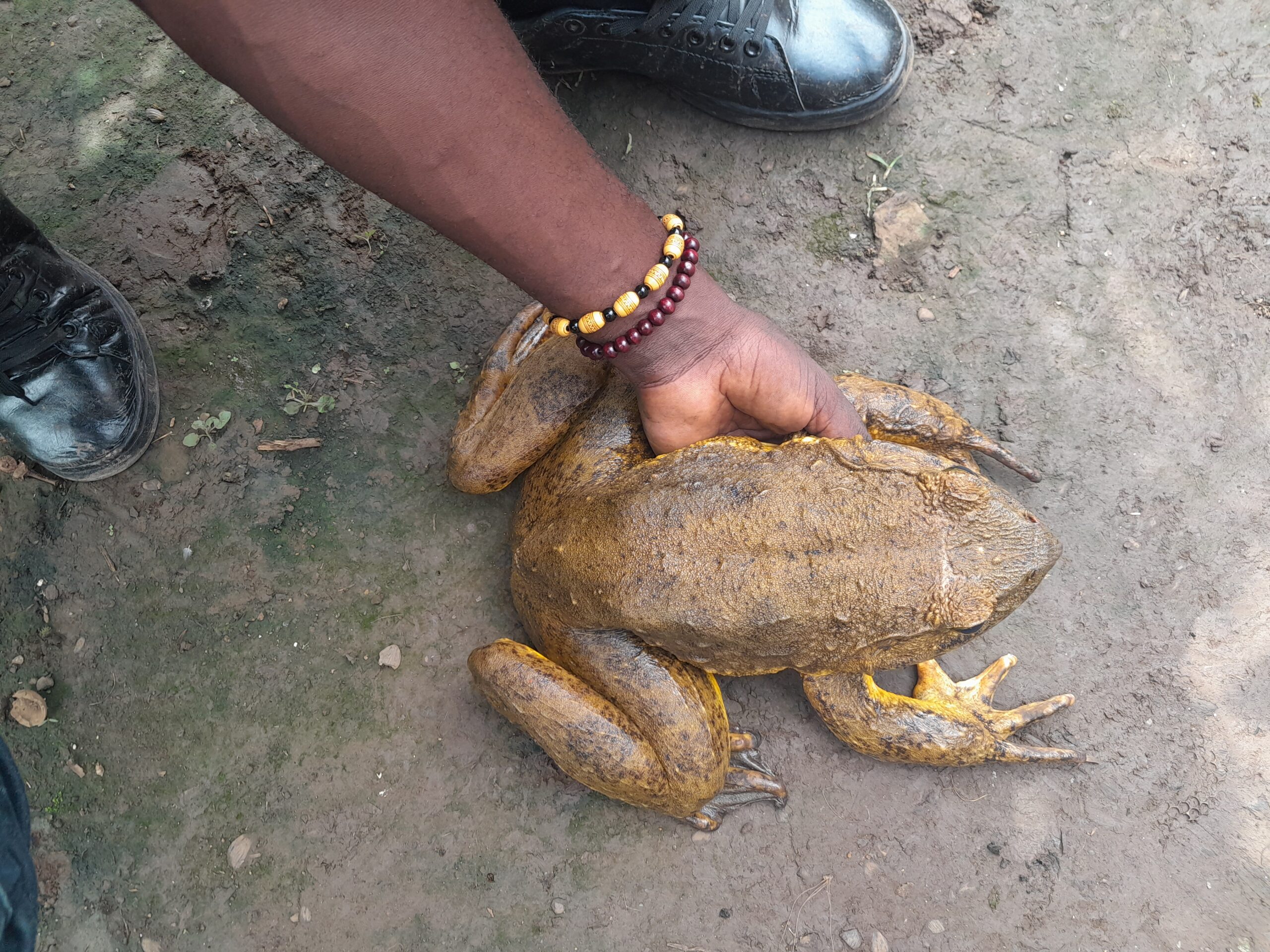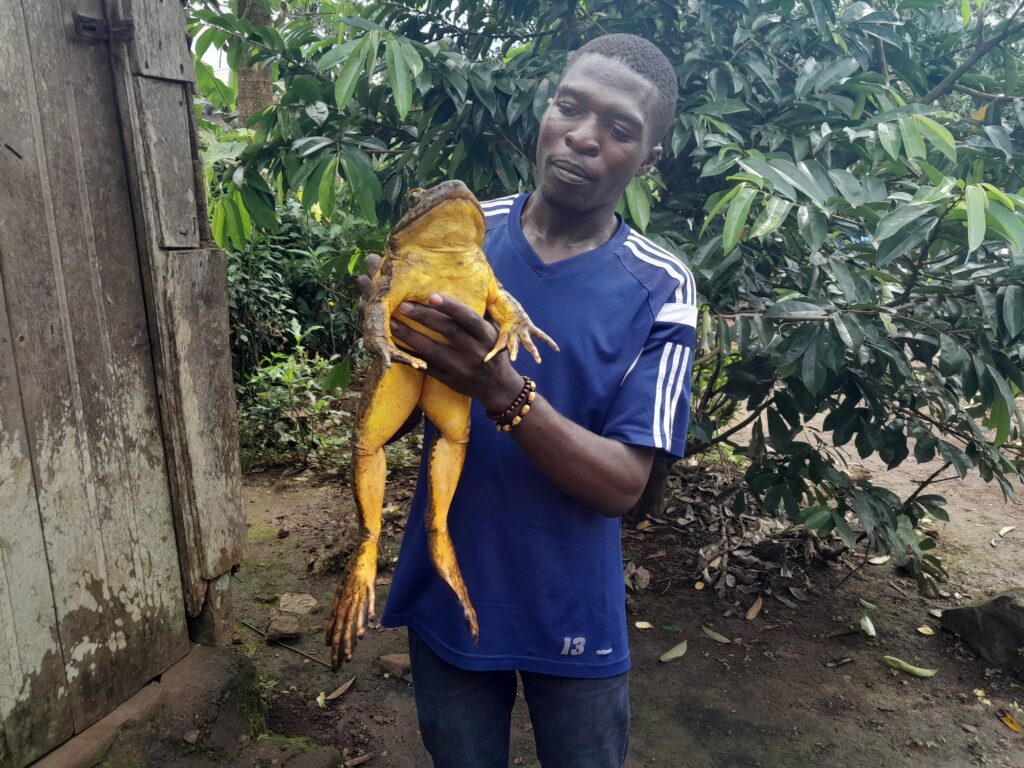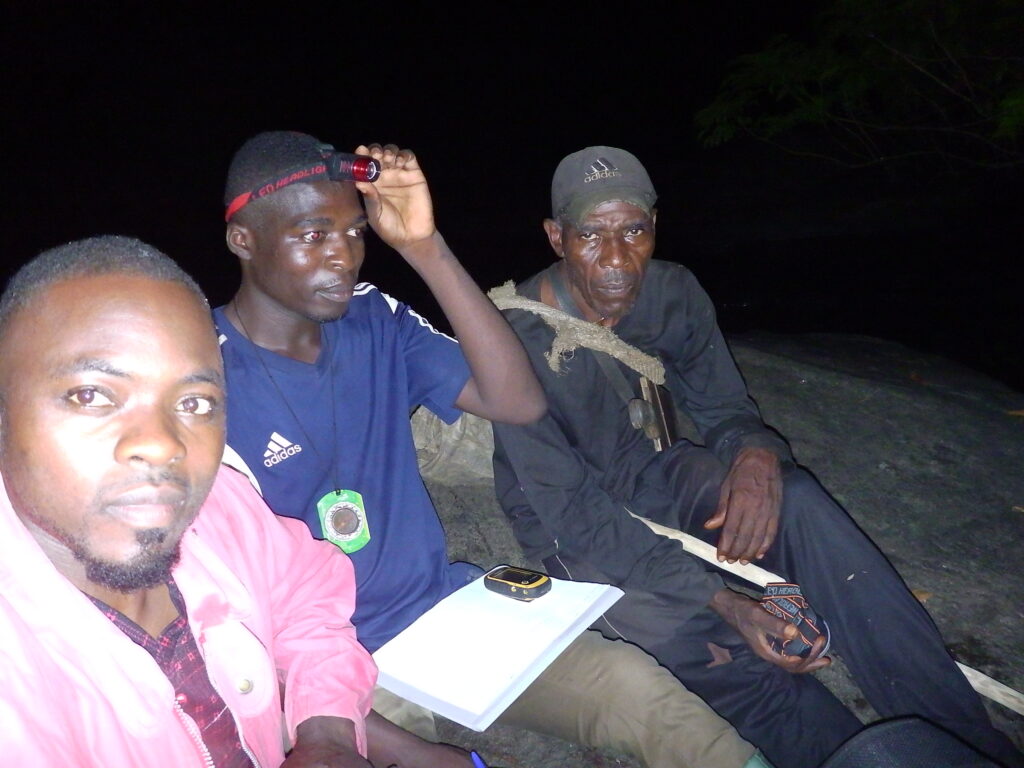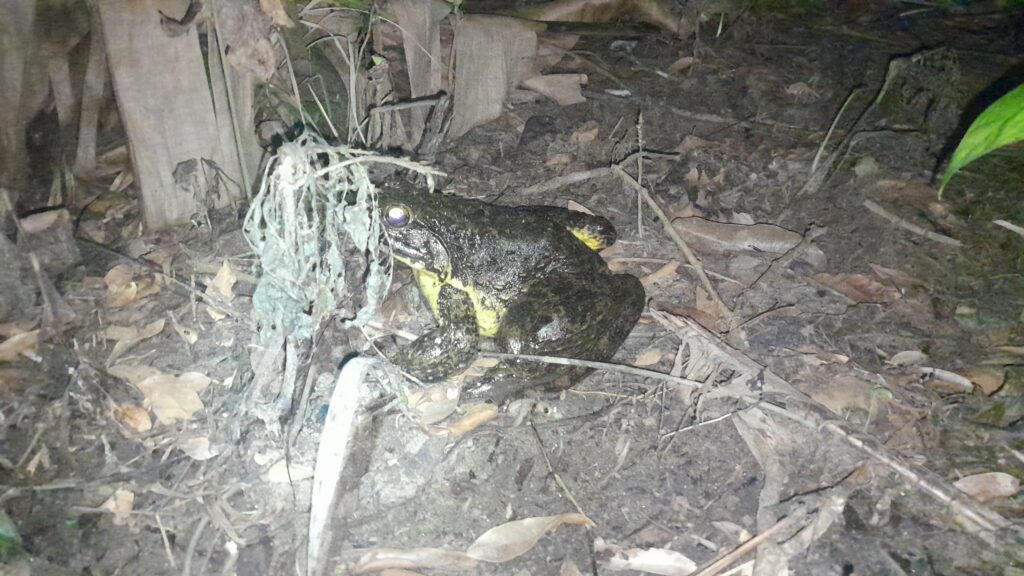
Courtesy of Cedric Fogwan

Courtesy of Cedric Fogwan
After patrolling the Nlonako Mountain in the Littoral Region of Cameroon for over a week in search of endangered species without success, a determined young researcher received an unexpected call which set a turning point for the conservation of the world’s largest frog species, called the goliath frog also known as Grenouille Goliath in French (Scientific Name – Conrua Goliath).
Cedrick Fogwan is a Cameroonian conservationist and researcher who is committed to protecting species under the threat of extinction. His master’s degree is in Marine and Fresh Water Ecosystem Management and his work with the African Marine Mammal Conservation Organization has continued to fuel his interest in creating solutions to biodiversity decline in Cameroon. According to researchers, the main culprit to this decline is human activity such as overexploitation for food.

In 2017, while carrying out an internship at the Douala – Edea National Park where he worked to identify protected species that are still being hunted down by the community, Fogwan was exposed to the rich biodiverse nature of Cameroon. One of the unique species he came across was the goliath frog which is mainly sparingly found in parts of Cameroon and Equatorial Guinea. Research suggests the construction of nests as spawning sites is a probable reason for the gigantic nature of the frog because of the strength necessary for moving nest construction supplies.
“I was so excited and proud to see that we have this frog species in Cameroon,” he said.
In September 2022, Fogwan conducted a field visit to the Nlonako Mountain along the Douala-Bafoussam Road to identify and protect the endemic species hotspots and assess their population trend. After spending up to a week patrolling along the rivers, Fogwan and his research team were on their way back to Limbe (formerly known as Victoria, a seaside city in the Southwest region with Cameroon’s second largest port) where Fogwan and his team are based, when one of the fishermen they had earlier interacted with, called to inform them that his neighbor had just caught a goliath frog and was about to kill it for food. Fogwan and his team immediately made a U-turn to save the goliath frog.
According to Law N°94/01 of January 20, 1994 which outlines forest, wildlife and fisheries regulations, the goliath frog is listed in the Cameroon law as (Class A) protected species and it is forbidden to kill one.

Fogwan reveals that although it is against the law, the goliath frog is still threatened by the bush meat market. This risk is exasperated as many local people in Cameroon are unaware of its value to the ecosystem, and even scientists are still coming to fully understand the species.
“It felt like holding a cat when I carried the goliath frog with my hands,” Fogwan said after having rescued and returned the frog to the wild.
This particular frog weighed about 2.8kg but they have the capacity to weigh up to 3.3kg, he said. “Almost like carrying a newborn (human).”
He was so moved by the specifications of this amphibian that he started an initiative with a team of four known as the “Goliath Team” to amplify the conservation of these endangered species as classified by the official IUCN (International Union for Conservation of Nature Extinction Red List).
Fogwan has continued to grow these efforts by recruiting Nlonako locals as citizen scientists in his research.
“Generally, we try to onboard and engage fishermen and poachers as part of our local on-the-ground research team as they are close to the resources and can easily find the species.”
Fogwan typically gives them smartphones so when they come across the goliath frog, they can take photos which indicate the date, place and time the frog was found, and can be helpful in tracing their egg laying spots and how to protect them.

Clearly, the conservation efforts are yielding results as Fogwan and his team embark on more research and rescue missions.
“Since the first rescue incident, we have rescued 20 plus more goliath frogs with the help of our local partners,” he said.
“One of the major challenges we face is how to convince the community to give up their source of food and livelihood without an alternative,” Fogwan said.
In an attempt to solve this problem, he has introduced the frog poachers to snail farming as an alternative means of livelihood. According to Fogwan, this is gradually influencing them to move from preying on, to protecting the frog as they report sightings of the frog to the Goliath Team.
The project to save the goliath frog is supported by the Conservation Leadership Programme (CLP) run by Fauna & Flora International, Birdlife International and the Wildlife Conservation Society.